
Looking forward to presenting this work at #JointActionMeeting2025 in my hometown (Turin, IT)!
Looking forward to presenting this work at #JointActionMeeting2025 in my hometown (Turin, IT)!
Neural entrainment tracks a partner’s rhythm more generally
Beta modulation underlies deeper self–other integration, supporting a shared body schema for action
Neural entrainment tracks a partner’s rhythm more generally
Beta modulation underlies deeper self–other integration, supporting a shared body schema for action
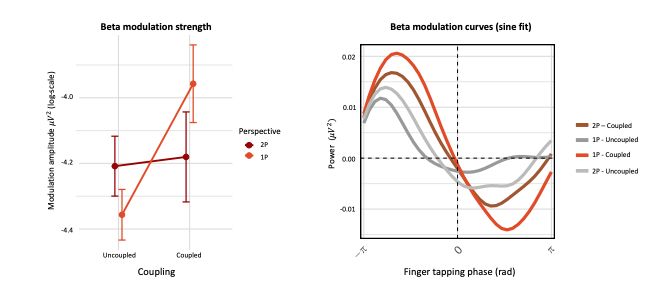
- Neural entrainment (low-frequency convergence across brains)
- Beta modulation (~20 Hz signals tied to perceiving partner movements)
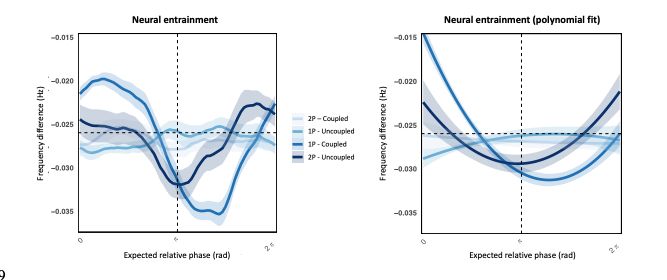
- Neural entrainment (low-frequency convergence across brains)
- Beta modulation (~20 Hz signals tied to perceiving partner movements)
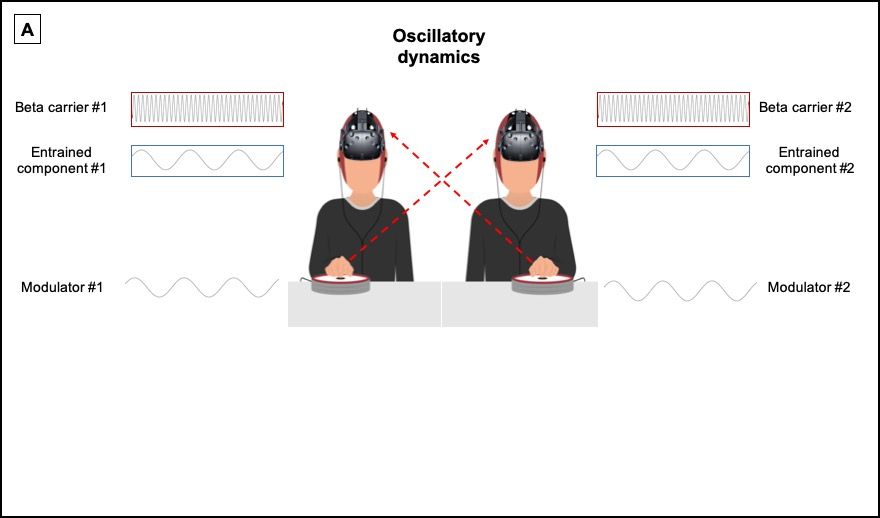
🛠️ FREQ-NESS has been a long time in the making.
If you’re interested in exploring frequency-resolved brain networks in your own data — check out the toolbox and documentation here:
👉 shorturl.at/mOVKF
Feel free to reach out for clarification or collaborations #OpenScience #Toolbox
🛠️ FREQ-NESS has been a long time in the making.
If you’re interested in exploring frequency-resolved brain networks in your own data — check out the toolbox and documentation here:
👉 shorturl.at/mOVKF
Feel free to reach out for clarification or collaborations #OpenScience #Toolbox
Provided the network separation, we also tracked cross-frequency coupling (CFC) between networks.
During passive listening to the metronome, the phase of low-freq (2.4 Hz) auditory networks selectively modulates the gamma band amplitude in more distributed medial temporal networks.
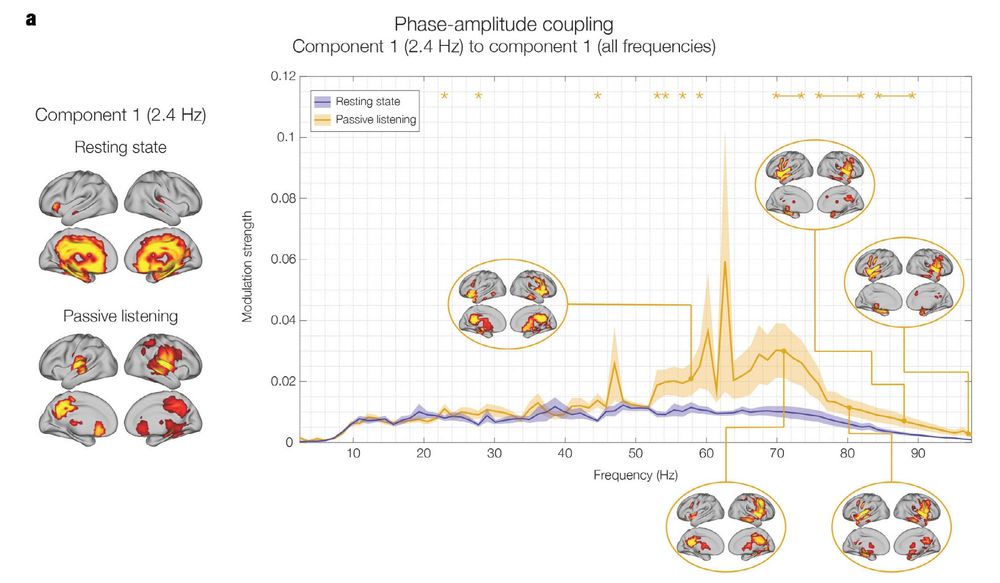
Provided the network separation, we also tracked cross-frequency coupling (CFC) between networks.
During passive listening to the metronome, the phase of low-freq (2.4 Hz) auditory networks selectively modulates the gamma band amplitude in more distributed medial temporal networks.
🎧 Auditory stimulation reshapes the entire frequency-resolved network landscape:
• EMERGENCE: Attunement to the 2.4 Hz stimulation
• RE-ARRANGEMENT: Spatial shift of alpha from occipital to sensorimotor, spectral shift to high alpha activity
• INVARIANCE: Beta networks remain unchanged
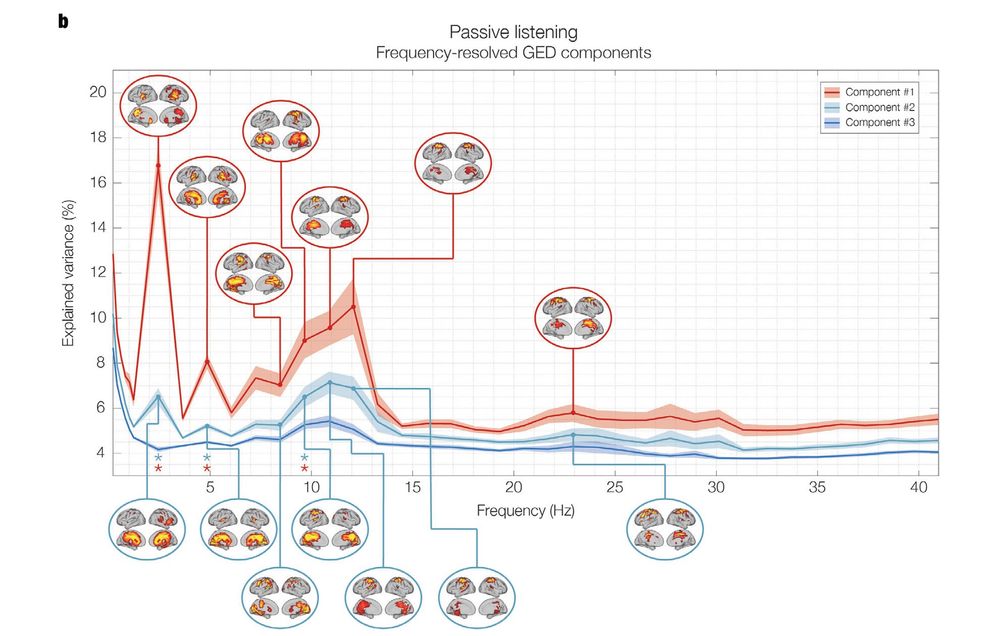
🎧 Auditory stimulation reshapes the entire frequency-resolved network landscape:
• EMERGENCE: Attunement to the 2.4 Hz stimulation
• RE-ARRANGEMENT: Spatial shift of alpha from occipital to sensorimotor, spectral shift to high alpha activity
• INVARIANCE: Beta networks remain unchanged
🧘♂️ During rest, FREQ-NESS reliably separates well-known resting state brain networks — the Default Mode Network, alpha-band parieto-occipital, and motor-beta sensorimotor topographies. Textbook configurations emerge directly from the data and based on frequency, without predefining regions.
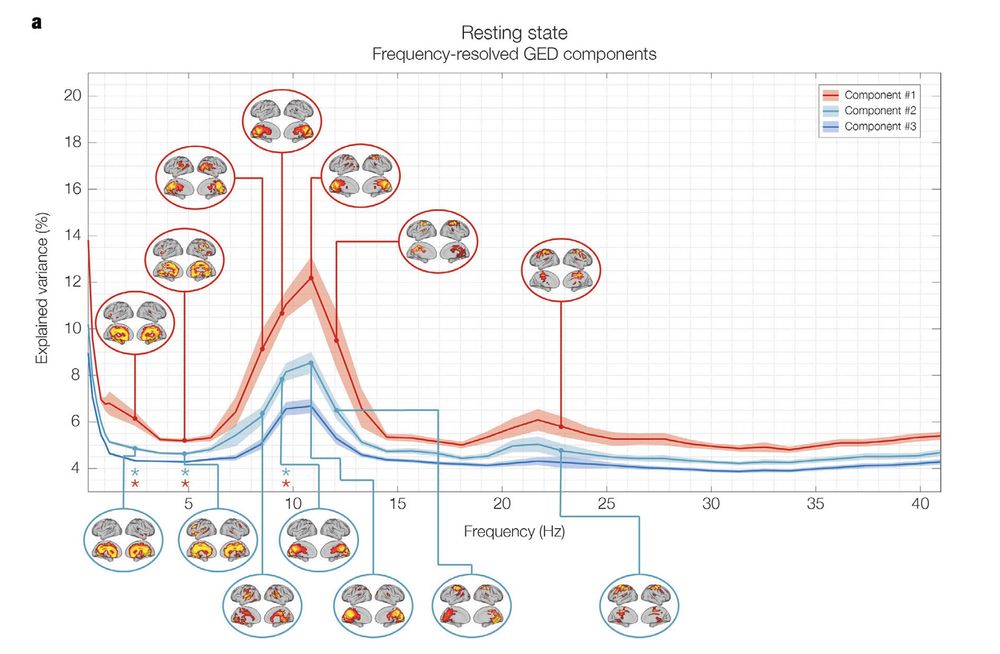
🧘♂️ During rest, FREQ-NESS reliably separates well-known resting state brain networks — the Default Mode Network, alpha-band parieto-occipital, and motor-beta sensorimotor topographies. Textbook configurations emerge directly from the data and based on frequency, without predefining regions.
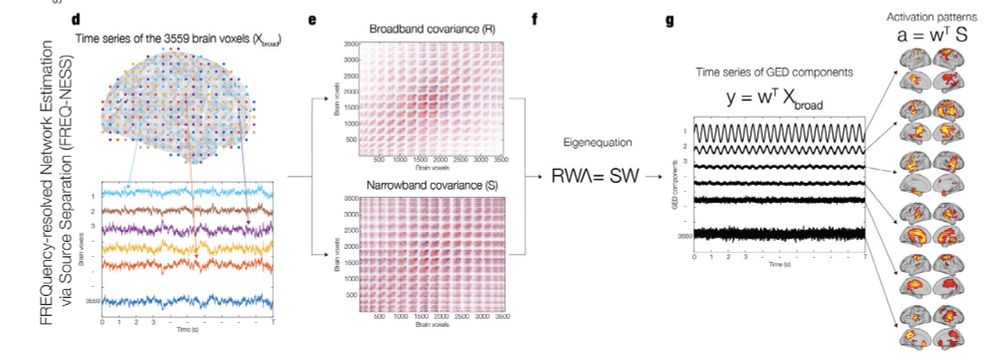
The method was co-developed by me and Leonardo Bonetti at @musicinthebrain.bsky.social.
🔧 The FREQ-NESS Toolbox is #open-source on GitHub:
shorturl.at/JT6iO

The method was co-developed by me and Leonardo Bonetti at @musicinthebrain.bsky.social.
🔧 The FREQ-NESS Toolbox is #open-source on GitHub:
shorturl.at/JT6iO
I would love to be added to the list.
Thanks in advance.
I would love to be added to the list.
Thanks in advance.

